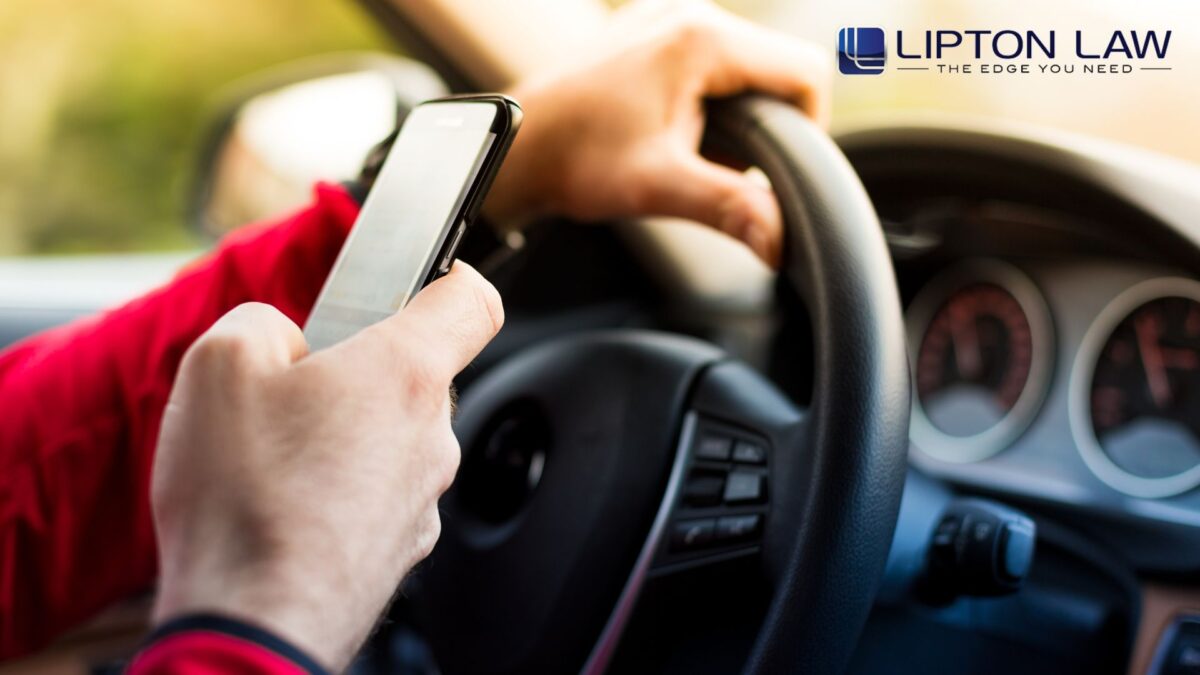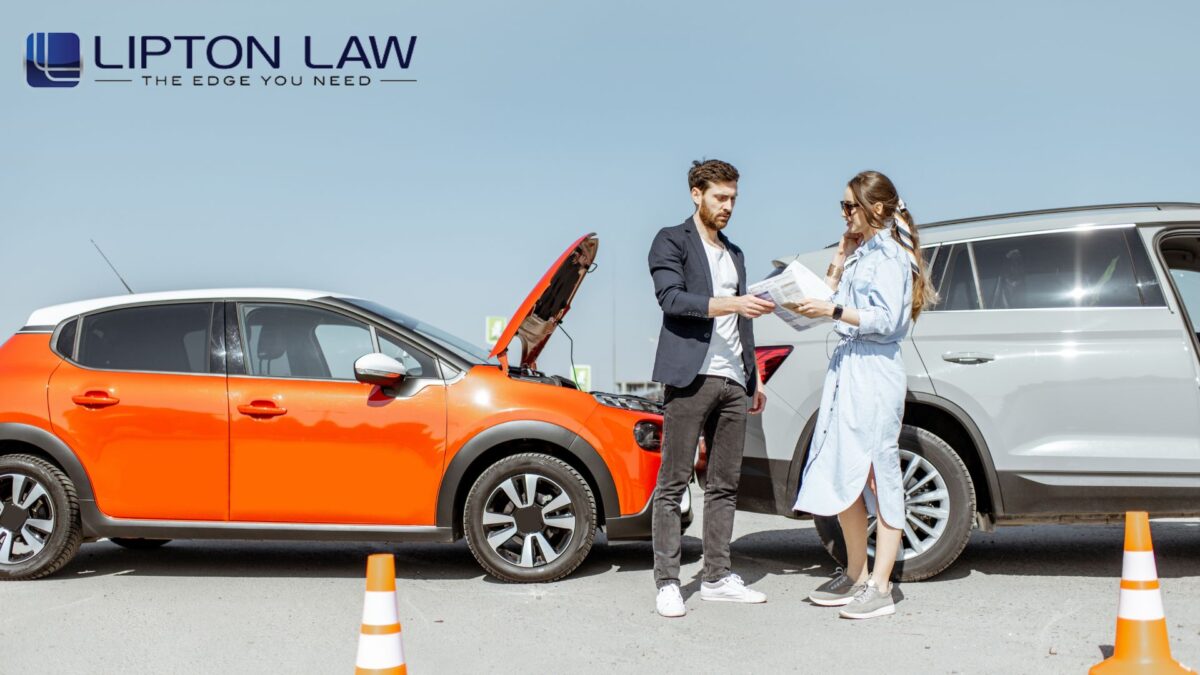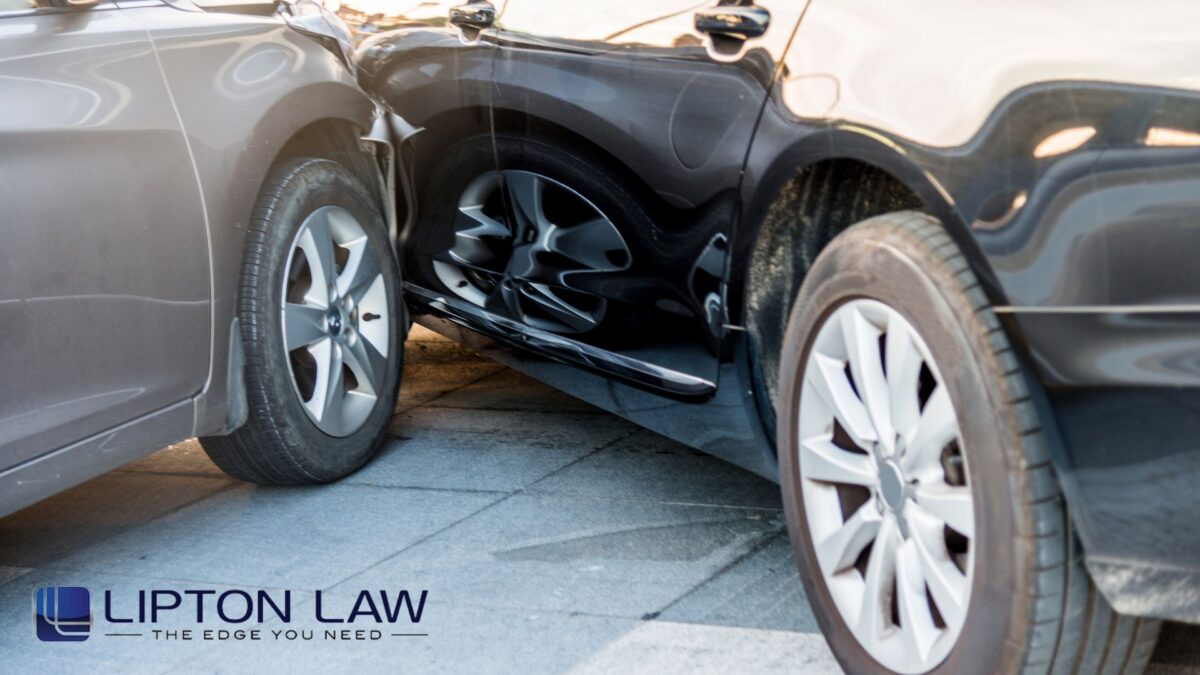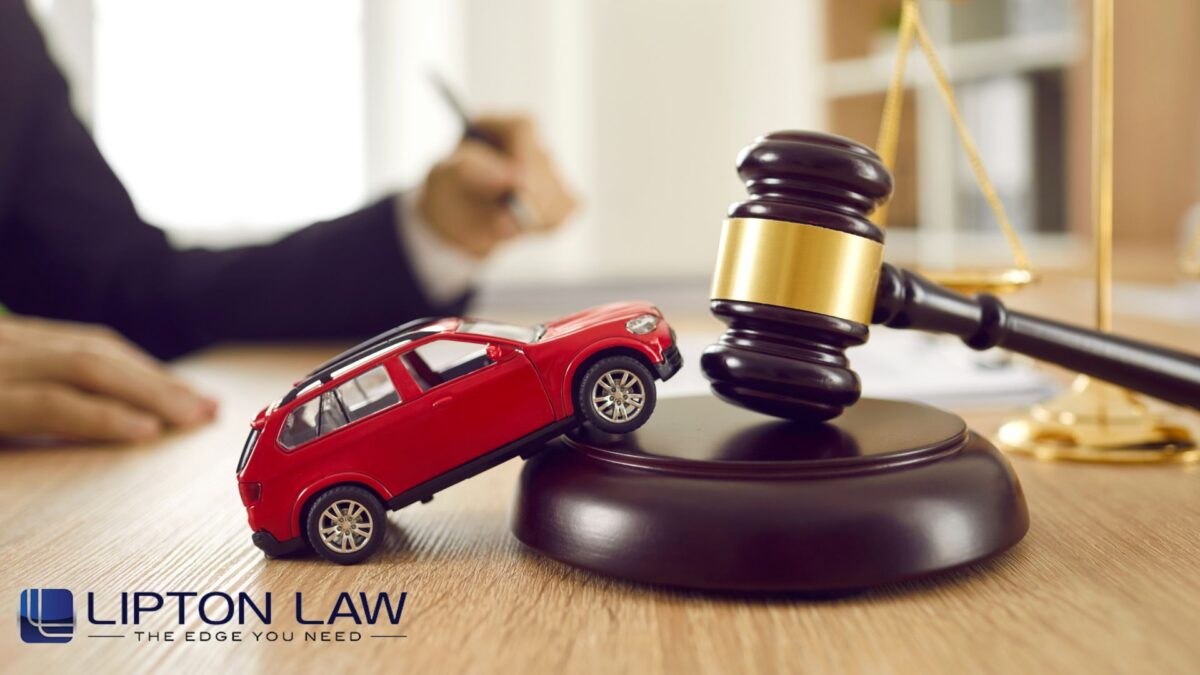A T-bone car accident can happen in the blink of an eye when another driver runs a stop sign or fails to yield. While the traffic violation may seem minor, they often have devastating results. They can leave the driver and passengers facing life-threatening or other catastrophic injuries, like a traumatic brain injury. T-bone car accidents are often the result of driver negligence, which means that if the driver had not been acting negligently, the accident would not have occurred.
When you’ve been involved in a T-bone or other type of car accident, you can face a long road ahead of you. The injuries are usually severe since the oncoming vehicle impacts the other with such force. These injuries can mean multiple surgeries and a difficult recovery. During this time, you can’t work, which means you don’t have an income that you can use to pay your growing medical expenses. While pursuing legal action following your T-bone accident may seem like an added headache, it can help you recover financial compensation to pay for medical bills and more expenses related to your injuries.
Filing a personal injury lawsuit is complicated, which is why it’s crucial to hire an experienced car accident attorney to handle the heavy lifting. When you hire a Michigan T-bone car accident attorney at Lipton Law to handle your lawsuit, you can rest assured that they will do everything they can to help you receive fair compensation for your injuries. To discuss your legal options with one of our personal injury attorneys, call 248-557-1688 to schedule a free consultation.
What Is a T-Bone Car Accident?
A T-bone collision occurs when the front of a vehicle impacts the side of another vehicle, forming the letter “T.” A T-bone accident is also known as a broadside collision. Due to the nature of T-bone accidents, it’s usually the fault of one driver that acts negligently.
A driver’s negligence may not always be the cause of a T-bone accident. If the driver loses control due to weather or a vehicle malfunction, it can lead to a T-bone collision. However, some drivers may lose control of their vehicle if they are driving recklessly or negligently. As you can see, proving the driver at fault for a T-bone accident can be complicated, especially when insurance companies get involved. Hiring an experienced personal injury attorney can help you navigate this legal process and help you recover a T-bone accident settlement.
Why Are T-Bone Crashes So Dangerous?
All vehicle crashes can be dangerous, but T-bone collisions are often more dangerous due to the force that the vehicle hits the other car with and the impact’s angle. Most vehicles are designed to withstand impacts at the front and rear of the car. Safety measures like airbags, seatbelts, and seat design can help protect a driver and passenger from being hit in the vehicle’s front or rear end. However, protection from a T-bone collision may only be side airbags to soften the impact if the vehicle has come equipped with that safety feature.
Most drivers involved in T-bone accidents aren’t able to slow down before hitting the other vehicle, which can lead to more severe injuries. The extreme force the oncoming vehicle impacts the other car with can lead to catastrophic injuries and even death. In 2020, the Insurance Institute for Highway Safety reported that T-bone car accidents made up 23% of all fatalities from car accidents during that year. Usually, all the vehicles involved in T-bone accidents sustain some type of injury or damage.
How Do T-Bone Collisions Happen?

Most T-bone accidents happen when the driver of one vehicle fails to obey traffic laws, like yielding, which causes them to run into another car. When one driver acts negligently, they can cause a T-bone collision. And where do broadside collisions most commonly occur? Generally, T-bone accidents are most common at intersections. Listed below are the most common acts of negligence that can lead to a T-bone crash.
Running Stop Signs and Red Lights
When drivers run stop signs or red traffic lights, they can collide with other vehicles that have the right of way. Another scenario where running a red light or stop sign can cause a T-bone collision is if the vehicle with the right of way hits the car that ran the stop sign or light.
Left Turn Accidents
Left-turn accidents can sometimes be just accidents. If a driver makes a mistake thinking that their traffic light has turned green when it’s still red, they can turn in front of the oncoming driver that actually has the green light. In a reverse scenario, the results can be equally serious. For example, the driver has the right of way to make their left turn, but the oncoming driver doesn’t realize quickly enough that the traffic light has turned red.
Distracted Driving
Distracted driving is one of the most common causes of car accidents. According to the National Highway Traffic Safety Administration, over 3,500 people were killed due to distracted driving in 2021. When a driver’s attention is on anything other than driving, they’re distracted. Drivers texting, changing radio stations, looking at maps, or eating can miss a changing traffic signal and collide with an oncoming vehicle.
What to Do After Being T-Boned

After you’ve been involved in a T-bone accident, it’s important to follow the steps below. The moments following a T-bone collision can be crucial for a successful car accident claim.
- Call the Police: Even if all the drivers involved cooperate, it’s still important to call the police. The police officer on site will write a report that can be used if you decide to pursue legal action. For example, if the official police report finds the other driver to be at fault, it can strengthen your car accident case and help you recover compensation. An official police report can go a long way in proving the at-fault driver, so this step is critical.
- Exchange Information: It’s important to exchange information with the other driver involved in case they try to flee the accident scene before the police show up. You’ll want to take a picture of their license plate and get any other information, including their insurance company info.
- Seek Medical Attention: After you’ve exchanged information and called the police, you’ll want to seek medical attention once you can leave the scene of the accident. Even if you’re not injured, it’s still important to visit a doctor. This is to ensure you don’t have any internal or other types of injuries that can appear later. Your medical record that includes treatment sought following a T-bone accident can also help a personal injury claim. Your car accident lawyer will use these medical records to show that the accident caused your injuries, and you would not have sustained those injuries had the accident not occurred.
Most Common T-Bone Accident Injuries

Since the vehicles involved in T-bone accidents usually travel at high speeds, the force of the side impact collision can lead to serious, life-threatening injuries. The driver or passenger on the side of the impact is especially at risk of being severely injured.
Listed below are the most common injuries caused by a T-bone car accident.
- Traumatic brain injury (TBI)
- Whiplash
- Spinal cord damage
- Post-concussion syndrome
- Concussions
- Nerve damage
- Bone fractures
- Neck injuries
- Internal injuries
- Paralysis
- Chronic or acute pain
- Permanent scarring or disfigurement
- Burns
- Post-traumatic stress disorder (PTSD)
- Wrongful death
You could be entitled to financial compensation if you or a loved one were involved in a T-bone accident and sustained any of the above injuries. Discuss your options with a Michigan personal injury attorney at Lipton Law. We will help you understand your legal rights and pursue a T-bone accident case. For example, if you suffered a spinal cord injury, you could file a spinal cord injury lawsuit.
Who May Be Held Liable for a T-Bone Accident in Michigan?

The circumstances regarding how the T-bone accident occurred will help your personal injury lawyer determine the at-fault driver. It’s not uncommon for more than one driver to be found liable for a T-bone car accident. However, most car accident cases will find the driver that acted negligently the party held responsible for the accident. For example, if the driver was drinking, texting, or failed to adhere to traffic signals leading to the T-bone accident, they will be found at fault.
So, how can fault affect compensation in your case? Can you get compensation if the accident was your fault? We explore these questions and more in the following sections.
Proving T-Bone Accident Fault
Proving fault following a T-bone car accident is key to your personal injury case. The steps above that are recommended for individuals to take after a T-bone accident are crucial to help prove fault. Your experienced personal injury lawyer will help you determine fault by collecting evidence from the accident and more. To help find the party at fault, your attorney will gather evidence and perform the following tasks:
- Review Evidence: Your personal injury attorney will review any visual evidence from your accident. This can include video or images taken by traffic cameras. Any sign of skid marks or debris can help determine fault. For example, imagine that skid marks are present at the accident scene. These can show that the other driver ran a red light and tried to stop to prevent the car accident.
- Evaluate Police Report: Your attorney will review the official police report from the accident. We will investigate if the other driver got a traffic citation and to understand the police officer’s point of view. In their police report, the officer may also include which driver they think caused the accident based on the scene.
- Interview Witnesses: While investigating your T-bone crash, your attorney will interview any witnesses that were present. Witness statements can help show the driver’s behavior leading up to the accident, like if they were speeding or driving recklessly.
- Black Box Data: Many vehicles are equipped with black boxes. These black boxes can contain important data showing the driver’s speed during the collision and more.
How Can Vehicle Damage Reveal Fault After an Accident?
The damage done to your vehicle following a T-bone collision can provide crucial information that can help strengthen your case. Inspecting your car and damage can help determine several factors. These include which vehicle struck the other, how fast the other driver was traveling, and more. As your personal injury lawyer continues to build your T-bone accident case, they may enlist the help of an accident investigator. These investigators can reconstruct the accident using the information gathered from the scene, like the accident report and witness testimonies.
Can the Car That Had the Right of Way Be Held Liable?
In most T-bone accident cases, it’s rare for the driver with the right of way to cause an accident. While it’s uncommon, it can happen if the driver is acting negligently. The situations below are some ways that the driver with the right of way can be responsible for T-bone accidents.
- Driving Under the Influence: If the driver has been consuming alcohol or is under the influence of drugs, it can impair their driving and decision-making skills.
- Speeding: Even if the driver has the right of way, traveling at a high rate of speed can make it difficult for them to come to a complete stop and shortens their reaction time.
- Tailgating: When a driver tailgates another, they could miss the other driver’s traffic signal that they’re making a left turn causing a side impact collision.
Even if the driver has the right of way, any of the above acts are negligent and can result in them being liable for damages.
Recoverable Damages in T-Bone Car Crash Cases

The aftermath of a T-bone accident can be devastating. Those involved usually have injuries that can often be life-threatening. Not only do you have to recover from injuries sustained from the accident, but you can also suffer substantial financial damages from the inability to work during your recovery and the continuously growing medical expenses. The personal injury attorneys at Lipton Law have been able to help their clients recover the following damages:
- Medical bills
- Lost wages
- Loss of earning capacity
- Emotional distress
- Loss of consortium
- Pain and suffering
- And more
If your loved one sustained injuries from a T-bone car accident leading to their death, you could be able to pursue a wrongful death claim that can help pay for funeral expenses. Contact the Michigan wrongful death attorneys at Lipton Law today to learn more.
Contact a Michigan T-Bone Accident Lawyer with Lipton Law Today
Filing a lawsuit following a T-bone accident may feel like the last thing you want to deal with during your recovery. However, recovering damages like lost wages and medical bills could help you avoid a dire financial situation.
The attorneys at Lipton Law have represented Michigan residents pursuing personal injury lawsuits since 1964. We are prepared to represent you. Consider hiring Lipton Law to represent you in your T-bone accident lawsuit. You can feel confident that your attorneys will fight for your rights and ensure the negligent driver is held responsible. To discuss your case with one of our experienced car accident attorneys, call 248-557-1688 to schedule a free consultation today.

